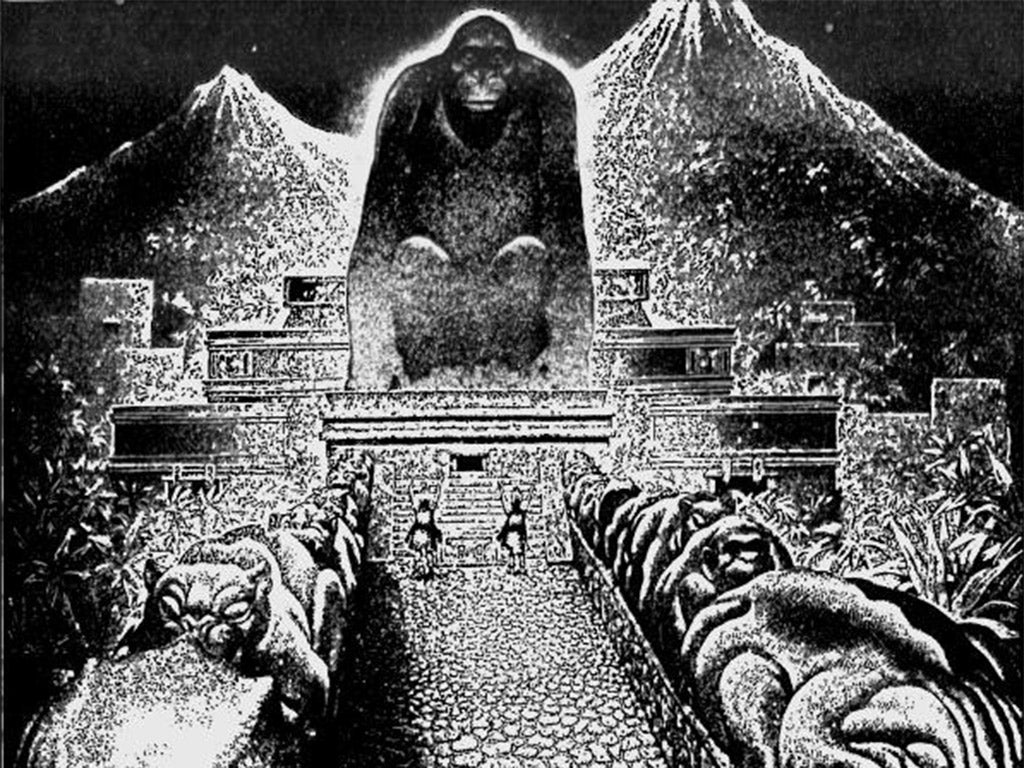The City of the Monkey God: Archaeologists claim to have found city lost for 1,000 years in remote Honduran jungle
Fabled 'White City' is now under threat from illegal cattle ranchers

The mossy carving had lain undisturbed for up to a millennium in some of the remotest jungle on Earth. It is a powerful effigy of a “were-jaguar” but also the pristine legacy of a vanished and - until now - unknown civilisation.
National Geographic has reported that an archaeological expedition to Honduras has emerged from the depths of a Central American wilderness to declare the discovery of the ruins of a lost culture sought by explorers since Cortes and hitherto known only by the slightly preposterous title of City of the Monkey God.
Although supposedly spotted from the air in the 1920s by Charles Lindbergh and the subject of repeated attempts to reach it, no-one had offered irrefutable proof of the existence of the mythical Ciudad Bianca or White City and some archaeologists had dismissed it as the wishful imaginings of gentleman explorers.
Until now. The Honduran-American expedition, aided by former members of the British SAS, reported that they had discovered the extensive remains of a city in the Mosquitia region, some 32,000 square miles of virgin rainforest in eastern Honduras which is largely only accessible by air.
Recent archaeological discoveries
Show all 11Alongside artifacts such as the stone “were-jaguar” - a half-human, half-feline representation of a transformed shaman - was a cache of sculptures which had laid untouched since the city was abandoned around 1,000 years ago.
The tops of 52 art works were found protruding from the jungle floor, prompting expedition members to calculate that many more lie below along with stone ceremonial seats and elaborately carved vessels decorated with snakes and vultures.
The artifacts were located at the base of an earthen pyramid which was mapped by the team along with a network of plazas, mounds and earthworks. The National Geographic Society, which accompanied the expedition and today revealed its findings, said: “This vanished culture has been scarcely studied and it remains virtually unknown. Archaeologists don’t even have a name for it.”
The scientists, who have documented their findings but had to leave the priceless artefacts in situ, believe their discoveries in a hidden valley in the swampy jungle of Mosquitia suggest not only a lost city but potentially an entire pre-Columbian civilisation whose settlements are scattered throughout the surrounding mountains. According to one estimate, the artifacts date back to between the tenth and 14th centuries.
But the vanishingly rare revelation of a lost world brought with it a warning that it may not remain so for long.
Deforestation for cattle farming has brought modernity to within 12 miles of the discovery site and Honduran archaeologists are worried the site is at risk of being overrun by the illegal ranching operators.
Virgilio Paredes Trapero, director of the Honduran Institute for Anthropology and History (IHAH), said: “If we don’t do something right away, most of this forest and valley will be gone in eight years. The Honduran government is committed to protecting this area, but doesn’t have the money. We urgently need international support.”
The confirmation of the existence of the mystical City of the Monkey God is the culmination of centuries of on-and-off endeavour by explorers to locate remains which the Spanish explorer Hernan Cortes predicted in 1526 would “exceed Mexico in riches”.
In 1939, a swashbuckling American adventurer called Theodore Morde claimed to have finally located the White City and said he had been told by indigenous indians that a giant statue of a monkey was buried there. He then died in a car crash before revealing its location.
The final discovery was made possible after an American film-maker and amateur archaeologist raised £980,000 from private backers in 2012 to fund mapping of the forest using state-of-the-art technology which bombarded the canopy with lasers and revealed the unmistakable straight lines of human construction.
Now that the site has been “ground truthed” by the expedition further work is being planned to secure its contents while its location is kept secret to protect it from looters.
Mark Plotkin, the expedition’s ethnobotanist, said: “This is clearly the most undisturbed rain forest in Central America. The importance of this place can’t be overestimated.”
Subscribe to Independent Premium to bookmark this article
Want to bookmark your favourite articles and stories to read or reference later? Start your Independent Premium subscription today.

Join our commenting forum
Join thought-provoking conversations, follow other Independent readers and see their replies